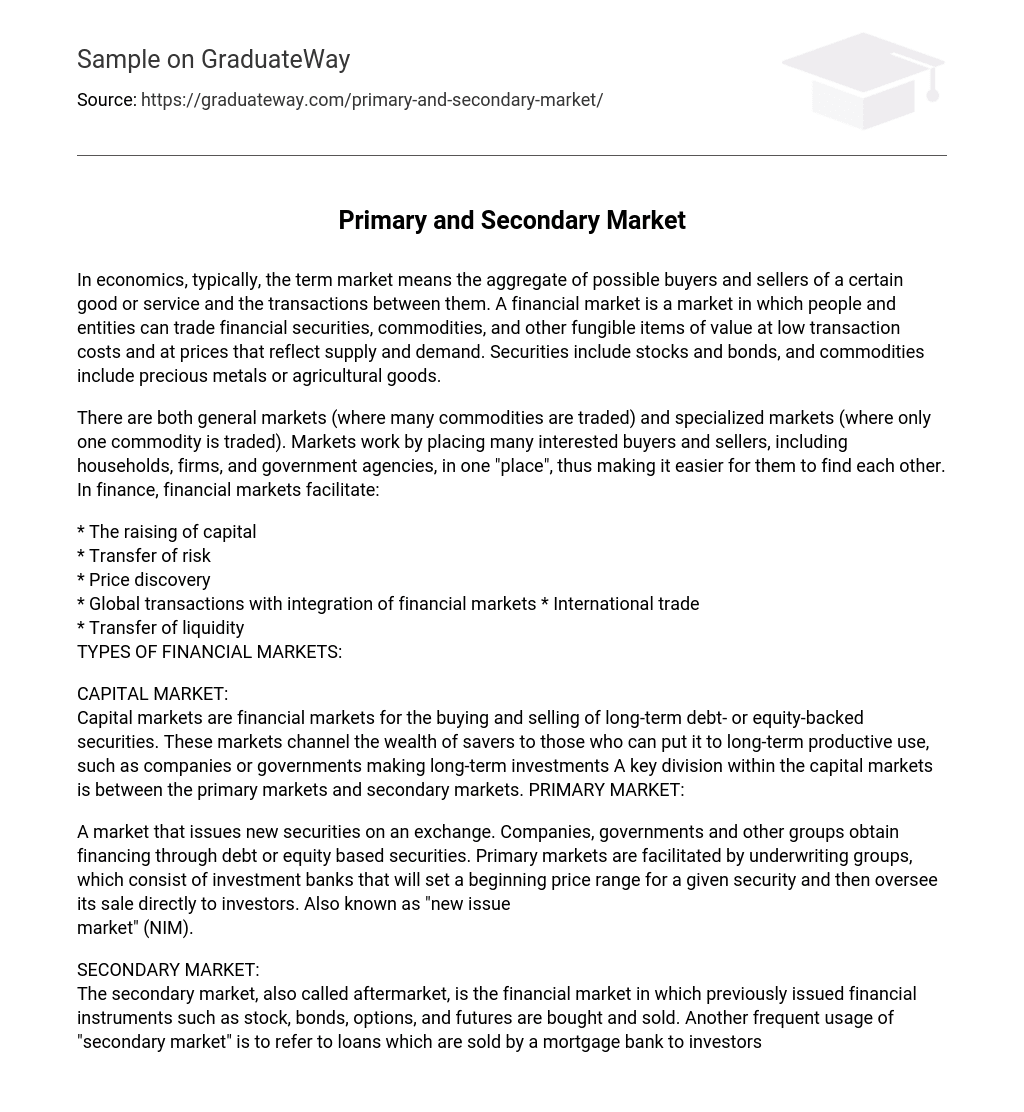In economics, typically, the term market means the aggregate of possible buyers and sellers of a certain good or service and the transactions between them. A financial market is a market in which people and entities can trade financial securities, commodities, and other fungible items of value at low transaction costs and at prices that reflect supply and demand. Securities include stocks and bonds, and commodities include precious metals or agricultural goods.
There are both general markets (where many commodities are traded) and specialized markets (where only one commodity is traded). Markets work by placing many interested buyers and sellers, including households, firms, and government agencies, in one “place”, thus making it easier for them to find each other. In finance, financial markets facilitate:
- The raising of capital
- Transfer of risk
- Price discovery
- Global transactions with integration of financial markets
- International trade
- Transfer of liquidity
TYPES OF FINANCIAL MARKETS
CAPITAL MARKET:
Capital markets are financial markets for the buying and selling of long-term debt- or equity-backed securities. These markets channel the wealth of savers to those who can put it to long-term productive use, such as companies or governments making long-term investments A key division within the capital markets is between the primary markets and secondary markets. PRIMARY MARKET:
A market that issues new securities on an exchange. Companies, governments and other groups obtain financing through debt or equity based securities. Primary markets are facilitated by underwriting groups, which consist of investment banks that will set a beginning price range for a given security and then oversee its sale directly to investors. Also known as “new issue
market” (NIM).
SECONDARY MARKET:
The secondary market, also called aftermarket, is the financial market in which previously issued financial instruments such as stock, bonds, options, and futures are bought and sold. Another frequent usage of “secondary market” is to refer to loans which are sold by a mortgage bank to investors.





